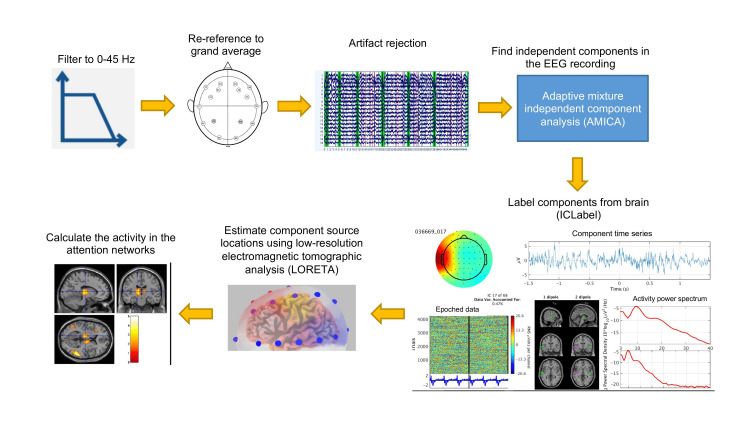Figure 1. EEG data processing steps.
First, EEGLAB is started and data is loaded to EEGLAB workspace. Any DC baseline is removed from the data, then data is bandpass filtered to 0.3-45 Hz range. Channels are re-referenced to grand average. Then, a mixed automatic/manual artifact rejection is employed. For the automatic rejection, contiguous data epochs are extracted and a standard spectrum thresholding algorithm is applied. Regions of contiguous epochs whose spectrum amplitude is larger than 10 dB in 0-10 and 35-45 Hz are then labeled as artifactual.
Following this automatic procedure, data is manually inspected to accept/reject the results of the automatic artifact rejection. Then, independent component analysis (ICA) is performed.
Next, the automatic EEG independent component classifier plugin for EEGLAB (https://labeling.ucsd.edu/tutorial/about) is use to label the components as brain and non-brain sources. Then, each component is mapped to source space using LORETA. LORETA models the cortex in 25892 voxels. This provides the opportunity to calculate the total activity level at the attention networks.
LORETA: low-resolution electromagnetic tomographic analysis

